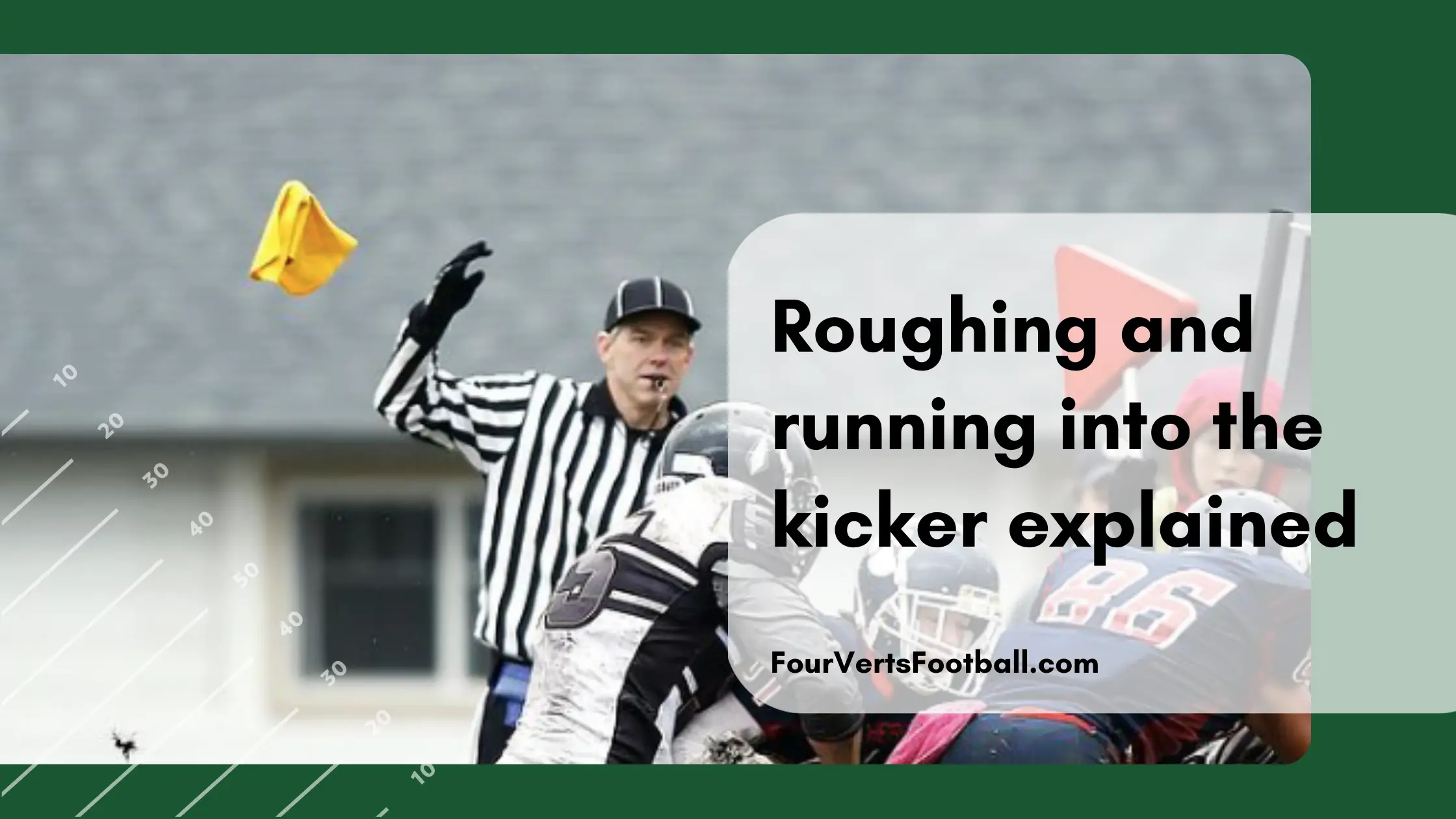Roughing the kicker and running into the kicker are two devastating penalties that a team can commit. But what is the difference between the two?
Roughing the kicker in football occurs when a defensive player contacts the plant leg of the kicker while his other foot is in the air. Or when both the kicker’s feet are planted after a kick.
Running into the kicker occurs when a defensive player contacts the kicking leg or foot of the kicker. Or when a defender slides underneath the kicker leaving him no place to plant his leg back onto the ground.
In terms of outcome roughing the kicker and running into the kicker are very different.
Roughing the kicker is a personal foul and is, therefore, a fifteen-yard penalty from the previous spot and an automatic first down.
Running into the kicker on the other hand is not a personal foul and results in a five-yard penalty with no automatic first down.
To learn about similar penalties check out our guide to roughing the holder or penalties for hitting the punter.
Exceptions to roughing and running into the kicker
Incidental contact after the defender has touched the kick
A player on the defensive team may make incidental contact with the kicker if it is after they have contacted the football.
Additionally, if the kicker is in the act of kicking the ball as the kick is blocked incidental contact may occur.
Caused by the kicker’s own motions
If movement by the kicker is what results in the contact between himself and the defensive players no penalty will be called.
Occurs during quick kick or rugby style kick
Both a quick kick and a rugby-style kick are executed quite quickly. Defenders may make contact in these situations without a penalty being called.
Occurs during or after a run behind the line
When a player becomes a runner in the backfield the officials will allow for more contact against the kicker. If a run has occurred before a defensive player contacts the kicker it may not be called depending on the severity.
After the kicker recovers a loose ball
If the kicker recovers a loose ball in the backfield then defensive players will be able to contact him without a penalty being called.
Defensive players will be in the backfield pursuing the loose ball. Calling a penalty for the contact between the kicker and these players wouldn’t make much sense.
Defender is pushed into an opponent
If the contact the defender makes with the kicker is due to being pushed or blocked then no penalty will be called.
Is the result of a foul by the opponent
If the defender contacts a kicker due to a foul committed against them then no penalty will be called.
Roughing the kicker
Roughing the kicker in football is the more serious of the two penalties. As we stated earlier in the article this penalty results in a loss of fifteen yards and an automatic first down.
Roughing the kicker is a more serious penalty because the contact made is often more violent and more dangerous.
This penalty is called for two different reasons.
- The defender contacts the plant leg of the kicker while his other leg is still in the air.
- Or the defender slides or contacts the kicker when both feet are on the ground.
The exception to this penalty is not called if a kicker has both feet on the ground before the contact and then trips over a defender who is on the ground.
This often occurs when a player attempts to block the kick and ends up on the ground behind the kicker.
This penalty will also not get called if the contact made with the kicker is not severe.
Additionally, the NFL rulebook also states that if the official is unsure about calling a roughing the kicker penalty they should err on the side of calling the penalty.
Running into the kicker
Running into the kicker is the less severe penalty of the two. When running into the kicker is called the team will be assessed a loss of five yards from the previous spot.
This penalty is not a personal foul and does not result in an automatic first down. This is a big deal because field goal attempts with a down and distance of 4th and 6 or more will not get a first down due to this penalty.
This is not the case with roughing the kicker which automatically gives the opponents a new set of downs and a chance to score a touchdown.
This penalty is called for two reasons
- A defender contacts the kicking leg of the kicker.
- A defender slides underneath the kicker giving him no way to return both feet to the ground.
This penalty involves a lot less contact and is less dangerous for the kicker. Running into the kicker penalties tend to occur after the kicker has been contacted but not in a severe manner.
For this reason, these penalties are less severe and do not give the offense an automatic first down.
Conclusion
I hope you have enjoyed our guide to understanding roughing the kicker vs running into the kicker in football.
If you want to learn more about penalties in football we recommend you check out our guides to illegal forward passes or twelve men in the huddle.

